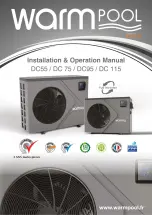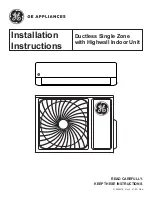
31
A good flare should have the following characteristics:
inside surface is glossy and smooth.
edge is smooth.
tapered sides are of uniform length.
When reaming, hold the tube end downward and be
sure that no copper scraps fall into the tube. (Fig. 9)
(3) Remove the flare nut from the unit and be sure to
mount it on the copper tube.
(4) Make a flare at the end of copper tube with a flare
tool.*(Fig. 11)
(*Use“RIGID” or equivalent.)
NOTE
NOTE
7-3-5. Caution before Connecting Tubes Tightly
a)
Be sure to apply a sealing cap or water-proof tape
to prevent dust or water from getting into the
tubes before they are used.
b)
Be sure to apply refrigerant lubricant to the
matching surfaces of the flare and union before
connecting them together. This is effective for
reducing gas leaks. (Fig. 12)
c)
For proper connection, align the union tube and flare
tube straight with each other, then screw in the flare
nut lightly at first to obtain a smooth match. (Fig. 13)
7-3-6. Tubing Connections
b)
To fasten the flare nuts, apply specified torque as:
a)
Temporary connection:
Screw in 3- 5 rotations by hand. (Fig.14)
Reamer
Copper
tubing
0-0.5 mm
If the special R410A
flare tool is used:
1.2 mm
If the previous flare tool
(clutch-type) is used:
Adjust so that the amount of tube
protrusion is as shown in the figure.
Fig. 9
Fig. 10
Fig. 11
Flare tool
Flare nut
Copper
tubing
Fig. 12
Apply refrigerant
lubricant here and here
Flare nut
Union
Fig. 13
CRV303
Service valve on
narrow tube side
Service valve on
wide tube side
Fig. 14b
Service valve on
narrow tube side
Service valve on
wide tube side
CRV243
Fig. 14a
Table 4
Tube Dia.
Tightening Torque
6.35 mm
12.7 mm
15.88 mm
18 N.m (180kgf.cm)
55 N.m (550kgf.cm)
82 N.m (820kgf.cm)
















































